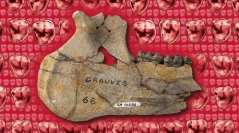

 Geodiversitas
45 (9) - Pages 277-326
Geodiversitas
45 (9) - Pages 277-326Perissodactyls (nowadays including horses, rhinos and tapirs) appear early in the Eocene and quickly spread throughout the Northern Hemisphere. Their geographical origin, probably Asian, as well as their phylogenetic relationships are currently debated. Early perissodactyl fossils from Europe have been poorly studied since the 1960s, and many specimens have been deposited since then in the European institutions, today allowing us to have a better vision of the evolution of the early Eocene hippomorph perissodactyls. This work presents a study and a revision of the early Eocene hippomorphs (MP7-MP10) of the Paris Basin. The majority of the material is unpublished and allowed to identify nine species of hippomorphs: Pliolophus vulpiceps Owen, 1858, Pliolophus barnesi Hooker, 2010, Pliolophus quesnoyensis Bronnert, Gheerbrant, Godinot & Métais, 2018, Cymbalophus cuniculus (Owen, 1842), Hyracotherium leporinum Owen, 1841, Propalaeotherium gaudryi (Lemoine, 1878), Orolophus maldani (Lemoine, 1878), Hallensia louisi Hooker, 1994 and Hallensia parisiensis Franzen, 1990. In these European early hippomorphs, we observe a trend toward increase of the lophodonty, as well as the increase of the centrocrista flexure on upper molars. Likewise, sexual dimorphism is reflected in the robustness of the mandibles. The faunas close to MP7 show differences between Northern and Southern Europe, confirming the hypothesis of a climatic barrier between them. A perissodactyl turnover at the generic level takes place between the sites close to MP7 and those close to MP8-9, as well as a homogenization of species between Northern and Southern Europe. The MP8-9 sites and those close to MP10 have similar perissodactyl faunas.
Perissodactyla, Hippomorpha, Equoidea, Europe, Early Eocene